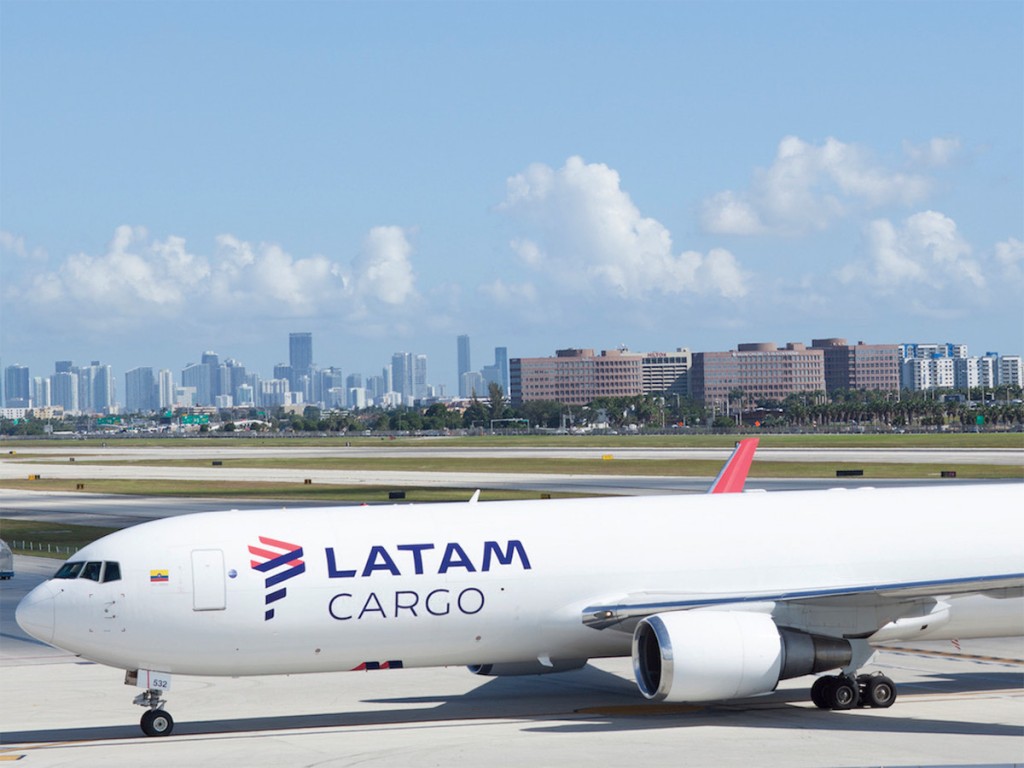LATAM is Latin America’s largest airfreight airline, but as CEO Andres Bianchi relates in an interview with the AJOT, he prefers to position the carrier as “nimble” and “flexible” not just big.
LATAM Cargo is Latin America’s largest airfreight airline, but CEO Andres Bianchi prefers to position the carrier as “nimble” and “flexible,” not just big. “We operate eighteen 767-300 freighters, going up to 19 soon and they are smaller and nimbler than the 747s or 777s and quicker to deploy if a customer has a need — opening a new market or needs a new frequency,” Bianchi told the American Journal of Transportation (AJOT) in an exclusive interview. He also says LATAM has exceptional belly capacity with its large passenger aircraft fleet which includes the large Boeing widebodies as well.
LATAM did own four 777 freighters but “sold them to have a homogeneous 767F fleet which we think is ideal for this region for its size, volume and versatility, flexibility” needs, says the airline’s vice president of marketing and product development Cristina Onate Lopez de Letona at Miami International Airport (MIA).
The 777 cargo jets were sold to Atlas Air Freight, added the airline’s Cargo CEO. “The (freighter) planes were deemed too large for the South American market.”

LATAM’s New Routes
Bianchi made it clear that LATAM, previously known for years as LAN Chile, is not about to add new routes to it network but “we’re evaluating some changes on existing routes but not new destinations,” he added.
However, this October, LATAM Cargo inaugurated a new route and direct service from Amsterdam in the Netherlands to Curitiba, Brazil, bypassing MIA, and a connecting flight. A press release indicates the 767 freighter is moving pharmaceuticals and general cargo to the Brazilian city and chose a direct point-to-point route “without the need for intermediate stops, reducing transportation time and providing enhanced capacity.”
LATAM’s new service operates two weekly flights, Tuesdays, and Saturdays. “At LATAM Cargo, we’re constantly reviewing our cargo itinerary, always seeking new opportunities to benefit our clients,” says Gudny Genskowsky, vice president of Network and Alliances for the airline. He notes that LATAM connects a total of 156 destinations that “bridge” South America with the rest of the world and with 53 destinations in Brazil alone.
Besides the Amsterdam to Curitiba direct flight, LATAM launched in March a new route from Quito, Ecuador to Brussels, Belgium, new route from Quito to Los Angeles, Houston plus Manus, and Sao Paulo in Brazil. In May, the airline started flying from MIA to San Jose dos Campos in Brazil. In June, LATAM began a route from MIA to Guayaquil, Ecuador, and Santa Domingo in the Dominican Republic, to San Salvador in El Salvador and to Georgetown in Guyana. In August, it began service from MIA to Brasilia in Brazil.

Delta Air Partnership
Bianchi hinted but did not go into detail on how LATAM’s previously announced Joint venture partnership with Delta Air Lines would benefit the passenger side of the Santiago, Chile-based airline. Most of the initial benefits have been mile-sharing advantages scooped up by passengers flying both air carriers. Delta’s news section on its website pointed that Delta and LATAM has a new Bogota, Orlando, Florida, service, while LATAM started in June flying from Colombia to Delta’s headquarters city of Atlanta, Georgia and in July from Los Angeles to Sao Paulo.
Bianchi was overall tightlipped about LATAM’s systemwide cargo capacity. “Obviously, we are facing a downturn right now, but we have a solid base with our 767 freighter fleet. We could add some U.S. destinations in late 2023 or 2024 or we will cut some ‘originating flights.’ Right now, we’re wrapping things up on the cargo side of the Delta partnership and should have a full implementation by 2024.”
LATAM is known for its creativity and brand focus. The parent carrier LATAM Airline Group but it operates country-specific branded airlines such as LATAM Airlines Chile, LATAM Airlines Brazil, LATAM Airlines Colombia, LATAM Airlines Peru, LATAM Airlines Ecuador, and LATAM Paraguay. It also has three separately branded cargo airlines—LATAM Cargo Brazil, LATAM Cargo Colombia and LATAM Cargo Chile.
Perishables is the Core Air Freight
LATAM’s cargo business accounts for 12% to 17% of the airline group’s total revenues, largely the traditional perishable commodities—salmon and seafood from Colombia, fruits from Brazil, flowers from Chile. “It is probably going to be the core of what we do in 2024,” Bianchi says.
Looking ahead, the LATAM Cargo CEO tells AJOT he doesn’t plan to make significant “adjustments” capacity-wise for his freighter or belly-freight carrying passenger aircraft in 2024 but he sees “some capacity adjustments at the market level.” But he did not elaborate.
“We’ve had the highest customer preference we’ve ever recorded,” he continues. “So, the combination of a good network, good costs and good customer preferences is working very well for us. And I think 2024 is the year the (airline, air cargo) industries achieve normalization.”






